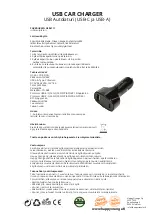
OWNER MAINTENANCE
6-6
To replace the oil and filter, proceed as follows:
1. Ensure that the engine is at normal operat-
ing temperature and park the vehicle on
level ground with the parking brake securely
applied and the engine turned off.
2. Open the bonnet and remove the oil filler
cap.
3. Prepare a suitable receptacle to collect the
displaced oil and remove the drain plug from
the sump.
CAUTION:
The oil being drained from the engine will be
hot. Care should be exercised to prevent
scalding.
4. When the oil has drained from the sump,
replace the drain plug using a new washer
ensuring that the plug is not over tightened.
Tightening torque is: 3.5 ~ 4.5 kgf.m
5. Remove the oil filter by rotating counter-
clockwise, using a proprietary oil filter re-
moval tool if necessary. Note that the oil
filter will contain approximately 0.5 litres of
oil and this should be collected in a suitable
receptacle.
6. Install a new oil filter having smeared the
sealing ring with clean oil and rotating clock-
wise until the filter contacts the mounting
and then a further one half turn. Do not over-
tighten.
Tightening torque:
Petrol Engine - 1.2 ~ 1.6 kgf.m
Diesel Engine - 2.3 ~ 2.5 kgf.m
7. Pour the specified quantity of the recom-
mended oil into the engine and replace the
filler cap. Start the engine and ensure that
no oil leaks exist. Turn off the engine and
after a couple minutes, recheck the oil level.
WARNING:
Prolonged and repeated contact with used
engine oils may result in serious skin disor-
ders including dermatitis and cancer. Avoid
contact with skin as far as possible and
always wash thoroughly after any contact.
Keep used oils out of reach of children. It is
illegal to pollute drains, water courses and
soil. Use only authorized waste collection
facilities including civic amenity sites and
garages for the disposal of used oil and oil
filters. If in doubt, contact the local authority
for disposal instructions.
SG050A1-E
ENGINE COOLANT CHECKING AND
REPLACING
WARNING:
Do not remove the radiator cap when the
engine is hot, since the system is pressur-
ized and coolant may be ejected from the
radiator resulting in scalding.
SG050B1-E
Coolant recommendations
Only ethylene glycol based coolant with a cor-
rosion inhibitor suited to aluminium alloy engine
components should be used in the cooling
system. No further additives or inhibitors should
be used. The coolant specific gravity should be
checked as prescribed in the maintenance
schedule to ensure adequate frost and corro-
sion protection. In addition, the engine coolant
must be replaced at the specified interval since
the corrosion inhibitor properties deteriorate with
time.
It is important to note that whilst an increase in
the concentration of anti freeze gives an in-
crease in the level of frost protection, a solution
which is in excess of 65% anti freeze will result
in reduced frost protection and engine over-
heating. Therefore the recommended concen-
tration of 50% should not be exceeded for
general use.
The use of methanol based anti freeze com-
pounds may result in engine overheating and
will invalidate the vehicle warranty.
















































